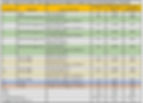Annual Forage Crop Mixtures for Beef Swath Grazing & Dairy Silage
- PCBFA
- Dec 4, 2019
- 4 min read
Updated: Jun 26, 2023
Collaborator: Barenbrug, USA
Location: Fairview Research Farm, NW-5-82-3-W6 on RR #35, MD of Fairview
Research Coordinator: Dr. Akim Omokanye
From: Peace Country Beef & Forage Association 2015 Annual Report
In the Peace, swath grazing annual cereal crops continues to be adopted by livestock producers as a method of extending the grazing season. Most producers use swath grazing to feed dry, mature beef cows that are in reasonable body condition. According to the Beef Cattle Research Council, research indicates that swath grazing can reduce total daily feeding cost per cow by 41 to 48%. This is based on a 78% reduction in yardage costs and a 25% reduction in feed costs. Daily feed costs range from $0.61 to $1.80 per cow, largely due to variability in the number of grazing days per acre. In collaboration with Barenbrug USA, PCBFA tested several varieties of annual crops with the objective of evaluating them for forage yield and quality for beef swath grazing and dairy silage. Barenbrug (USA) is an industry-leading plant breeding, seed production, research and marketing company.
Methods
The study site was at Fairview Research Farm (NW5-82-3W6) on RR #35, MD of Fairview. The site used was seeded to alfalfa and had been hayed for more than 10 years. Prior to seeding, soil tests at 0-6” soil depth done at Exova laboratory (Edmonton) showed an organic matter content of 3.0 % and a pH of 6.9. The site was sprayed with Roundup the fall before and worked in the spring before seeding. Thirteen (13) treatments consisting of 1 to 3 crops were arranged in a randomized complete block design in 3 replications in small plots. The check treatments (2) consisted of Gulf annual ryegrass seeded at 25 lb/acre and Tetilla annual ryegrass seeded at 25 lb/acre. Table 1 shows different treatments (crop types, crop mixtures & seeding rates).
Seeding was done on May 25 with a 6-row plot drill at 9 inch row spacing. Fertility according to soil test recommendations for balanced crop nutrition was 200 lb N + 96 lb P + 62 lb K + 75 lb S and applied at seeding. Roundup was used for burn off. In-crop spraying was done with 0.44 L/ha Prestige A + 1.98 L/ha Prestige B on all plots (except for plots that had T-Raptor hybrid rape (treatment 4) and brassica (treatment 6)).
Forage harvest was done on August 10, when Sundre barley was at the soft-dough stage and CDC Baler oats was at the milk stage. At harvest, samples were weighed for fresh weight and sub-samples (about 500 grams per plot) were dried for some days and later reweighed for dry matter (DM) content and DM yield estimation. Forage samples for quality tests were shipped to Rock River Laboratory Inc., Watertown, WI, US.
Moisture received from seeding to harvest was 4.57 inches. Fairview was very dry in 2015, and grasshopper infestation was very high.

Results
Forage Yield (Table 1)- The forage DM yield was highest for treatment 4 (7991 lb DM/acre), followed closely by treatment 7 (7923 lb DM/acre) and then treatment 9 (7300 lb DM/acre). Treatments 4, 7 and 9 had significantly higher DM than the 2 checks (treatments 12 & 13) as well as treatment 11. Compared to other treatments, the 2 checks and treatment 11 performed poorly in terms of DM (with <3000 lbs DM/acre).
For swath grazing purpose (treatments 1-6), the study showed that seeding oats with T-Raptor hybrid rape (treatment 4) appeared to favour more DM yield than seeding oats as a monoculture (treatment 1) or seeding oats in a mixture with other crops (treatment 2, 3, 5 & 6). For dairy silage (treatments 7-11), monoculture barley (treatment 7 and 9) and monoculture triticale respectively, appeared to have 1031 and 512 lb more DM than when barley and triticale were mixed with Green Spirit ryegrass (treatments 8 and 10).

Some Notes on T-Raptor & Green Spirit ryegrass
T-Raptor
T-Raptor is an early maturing hybrid brassica, a cross between a forage turnip and a forage rape, with 50-70 day crop duration.
T-Raptor exhibits a leafy growth habit (higher leaf-to-bulb ratio) and is well-suited to grazing. T-Raptor, a forage brassica is an excellent late-summer feed source, and a good supplement for late summer periods when cool-season forage grasses slow in production.
T-Raptor requires good soil drainage and a pH 5.3 - 7.5. Cold, drought and heat tolerant, these crops commonly provide valuable feed when other crops are less productive.
Forage Brassicas are useful for extending the grazing season when other forages are less productive. Brassicas can provide higher crude protein and digestibility at half the cost of hay or conserved forages. Brassicas have extremely high yield potential when grown on high fertility soils and properly managed. Brassicas can produce as much as 40 tons (wet) per acre.
For more information please visit: http://www.kingsagriseeds.com/blog/wp-content/uploads/2013/07/T-Raptor-Hybrid-Brassica-Kings.pdf
Green Spirit
Green Spirit is a unique blend of diploid and tetraploid Italian ryegrass varieties. Combining tetraploid and diploid varieties maximizes the advantages each has to offer. Tetraploid varieties provide high dry matter production, disease resistance to crown rust and improved palatability. Diploid varieties are added for better persistence under grazing and improved traffic tolerance. These varieties also have improved dry matter production and winter hardiness compared to older cultivars. In regions with moderate climates, Green Spirit will be a biannual forage. Green Spirit is adapted to a wide range of soil conditions – it performs in heavy clay soils and light sandy soils.
Spring Planted Green Spirit Italian ryegrass - High dry matter production, no seed head production, very high forage quality, produces forage until late fall, over-winters and produces forage in the following spring and early summer.
Fall Planted Green Spirit Italian ryegrass - Better winter hardiness, late heading in spring, maintains better forage quality, better regrowth after cutting.
For more information, please visit: http://www.speareseeds.ca/shared/media/editor/file/greenspirit.pdf

